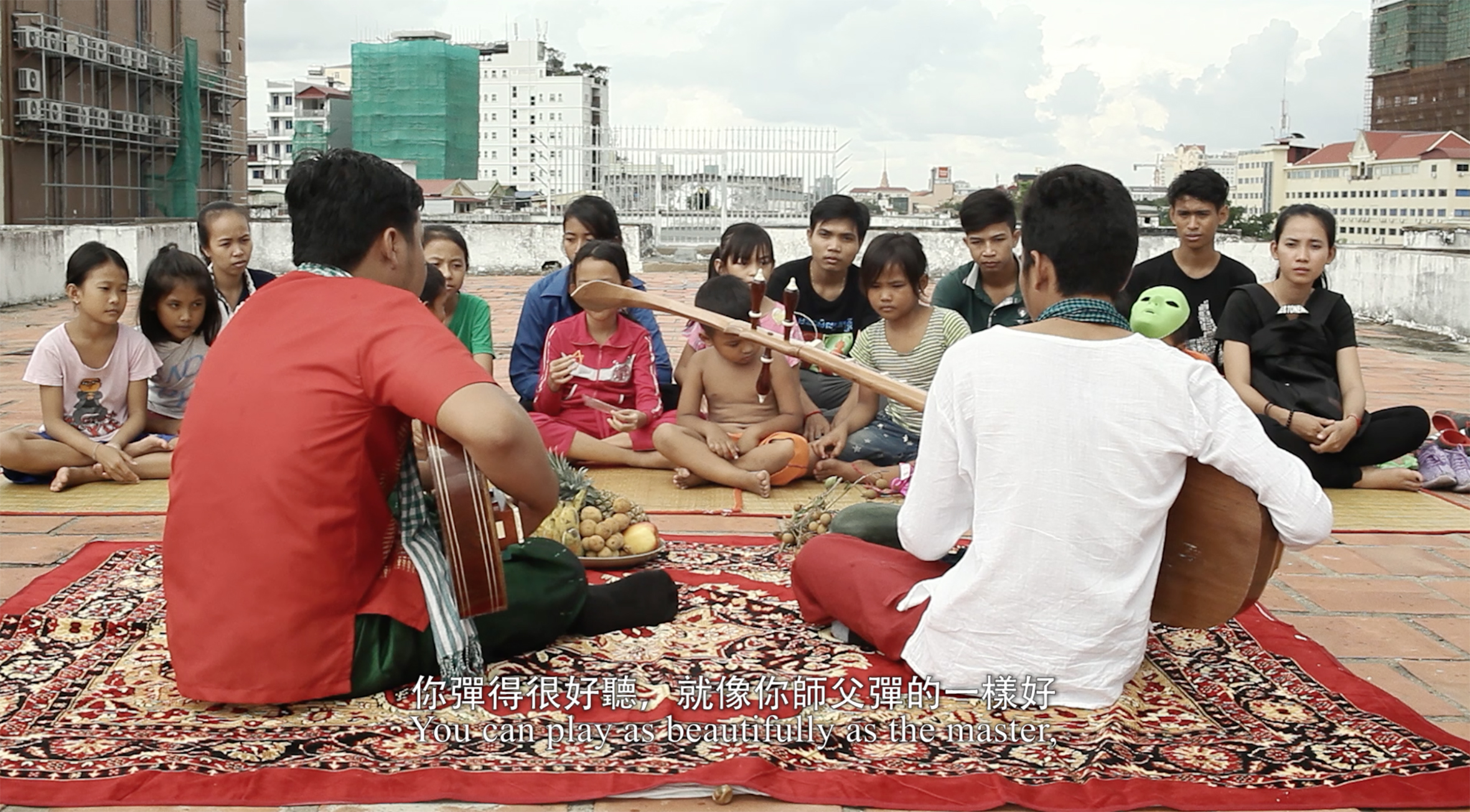
— Log in to watch the artist video if you have been given an access
- Artist
- Hsu Chia-Wei
- Title
- White Building Project
- Year
- 2016
- Duration
- 18 min
- Format & Technical
Single channel, full HD video, colour, sound
4
In 1963, only a decade after Cambodia’s independence from France, the White Building in Phnom Penh was built in a style that combined Cambodian architecture with French Modernism. The project started full of hope for the future and expressed the country’s newborn independence, and its arrival on the international scene as a modern and innovative nation.
The White Building was not an isolated project that functioned as a landmark with a statement; it was part of a larger social plan. The residency was the centre of an infrastructure for a new society, where cultural activities were accessible to less wealthy residents. Payment plans were provided so they could become homeowners. The National Theatre and Exhibition hall were also part of the complex and many residents were performance artists themselves. This area was built upon a dream that faced many difficulties in the last decades. The tragedy of the recent history of Cambodia passed through the walls of the White Building. In 1975 the soldiers of Khmer Rouge occupied the city and its inhabitants start moving away. After that, 90% of all artists living in the area were executed, as the traditional performance art was seen as a symbol of the old regime. The fading of the ideal that once was the fundament for the construction of the White Building happened simultaneously with its aesthetic decay. Hsu Chia-Wei invited traditional performance artists that used to live in the building, to perform their different disciplines in the spaces that are marked by traces of fire, humidity and mould.
The sounds of every performance echo trough the spaces and are bounced back by the dirty walls. The movement of the dancers take up the space that the architecture left behind. Their play creates an illusion, an escape from daily reality. Their colourful masks and pure sounds clash with the history that is manifested in the decay of the building. They take up the space and appropriate it by transforming it temporarily into another dimension. A story, a dream, something that doesn’t necessarily has to be true. It connects the past to the present trough this part of Cambodian identity that survived and now shows its magical splendour in the White Building that is no longer white.
Inez Piso
Stills





